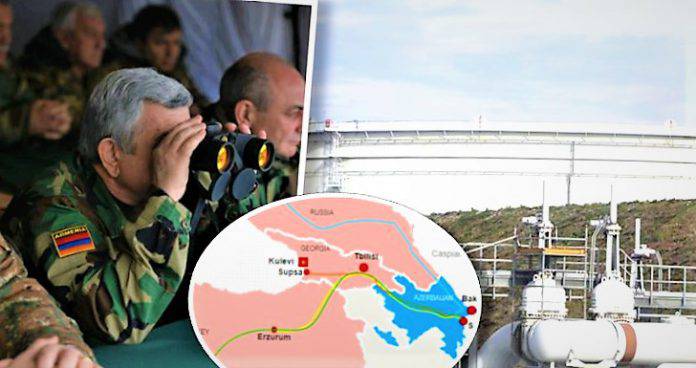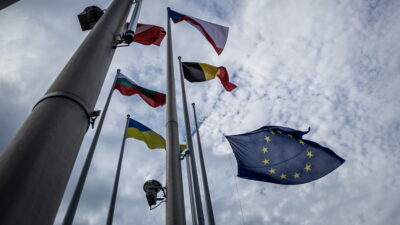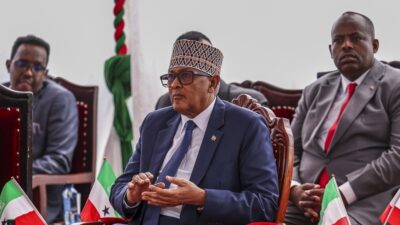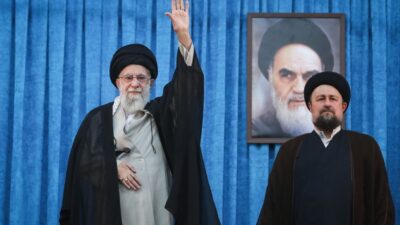Giorgos Adalis: Armenia, Baku-Ceyhan pipeline and Erdogan’s partners
08/10/2020
Turkish media report that on October 6, the Baku-Ceyhan pipeline was attacked by Armenians and shut down, with financial implications. At the time of writing, the information has not been confirmed by the international media, which raises questions. Until now, however, the Armenians had avoided attacking the pipeline although they could have done so.
Let’s take things from the beginning. It was Wednesday, July 13, 2006, when the “happy news” arrived in Brussels. The next day, the EU issued a fact sheet, which looked more like a “Community directive” than a newsletter. It was distributed to MEPs and the relevant EU institutions and served almost as a guideline for the governments of the member states.
The Baku-Tbilisi-Ceyhan pipeline had been completed and the first gas purchases had already been made in the Turkish port of Ceyhan. The first to load Azeri oil were BP and Turkish Petroleum. What happened in the Nagorno-Karabakh war in the 1990s is well known. It seems that now the big players have abandoned Armenia. That newsletter (seen below) was eloquent.
The EU and the West in general “sold” Armenia for the sake of the hydrocarbon deposits of Azerbaijan and Kazakhstan. The map of the pipeline shows that a bypass was made, so that the pipeline would not pass through Armenia, because the players were raising a security issue, meaning that the Armenians would sabotage it! However, the point where the pipeline crosses the southern border of Azerbaijan is only 14 km from the border with Armenia and if the Armenians wanted, they could attack it.
Abandoning the Armenians
The pipeline then enters Turkey and passes through territories with Kurdish populations. The pipeline was attacked by the PKK. The biggest disasters took place in Rafahiye. The Armenians have never had a problem with the operation of the pipeline, despite the fact that the pipeline added geostrategic value to Azerbaijan, which is ruled by the Aliyev family and further isolated Armenia. This, after all, was the demand from the beginning. And Russian support for Armenia “faded” over the years.
In the same newsletter, the EU announced the construction of a new pipeline from Kazakhstan to transport gas from the Kasagan field. The pipeline would be connected to the Baku-Ceyhan pipeline, further degrading Armenia. Who were the players who contributed to Azerbaijan? Why do so few in the West talk about the Azeri attack against Nagorno-Karabakh?
Why do they allow Erdogan-Aliyev to spread death, Turkish F-16s to bomb Armenian civilians and even shoot down Russian made fighters? Why is the West allowing Erdogan to set another fire to the region? So let’s open the share register to see who the real owners of this pipeline are.
The interests behind the pipeline
Baku-Tbilisi-Ceyhan Pipeline Company (BTC Co) was established in 2001 with the sole purpose of constructing, managing, and maintaining a 1,770 km pipeline connecting the Sangachal terminal in Baku with the Ceyhan terminal in the Mediterranean. Azerbaijan’s hydrocarbon reserves are estimated to have another 30 years of life.
The project’s main contractor was multinational firm BP, which has a strategic partnership with Erdogan in other energy fields. But BP also has 19.75% of the shares in the Russian energy giant Rosneft. That is why former BP strongman Robert Dudley has been on Rosneft’s board for a decade.
Dudley remains in place despite being replaced at the helm of BP this year by the younger Bernard Looney. But he continues to represent BP’s interests in the Russian giant. Dudley, moreover, has been a member of the Board of Directors of the Russian Geographical Society for years.
For months, the Russian state has held only one of Rosneft’s 10,598,177,817 shares. Although this has to do with Russian investments in Venezuela and the lifting of US sanctions on Rosneft, it should be noted that 40.4% of the shares are held by JSC ROSNEFTEGAZ. The president of Rosneft is the former German chancellor Schroeder and his deputy is also the German Matthias Warning, a big banker and CEO of the Nord Stream II pipeline. This parameter may explain Putin’s “relaxed” stance on the Nagorno-Karabakh conflict.
Stoltenberg’s “spawn”
BP has the largest stake in the owner of the Baku-Ceyhan pipeline (30.1%) and is also the manager. The Azerbaijani SOCAR, where decisions are made by the Aliyev family, owns 25%. The third-largest percentage in the pipeline is held by the American Unocal with 8.9%. Unocal is a subsidiary of Chevron, which is expected – unexpectedly – to acquire the Cypriot and Israeli plots, after the bankruptcy of Noble Energy.
The fourth owner of the pipeline is the Norwegian Statoil with a percentage of 8.71%. Jens Stoltenberg has known it well ever since he was an MP, chair of the Independent Energy Authority, and a pioneer in the creation of Norway’s “Hydrocarbon Exploitation Fund”, which eventually became a global player.
Later, as prime minister, he pioneered the privatization of Statoil and its transformation into Equinor. Stoltenberg took over Norway with zero defense spending and handed it over first in the world. His placement in NATO was essentially a reward. And of course we do not forget that Norway provides Turkey with specialized personnel for its illegal surveys in Greece and Cyprus. For those who fail to understand, the Baku-Ceyhan pipeline is in a sense a Stoltenberg’s “child”.
The other co-owners
Fifth on the list of major shareholders is EMI with 5%. The Italian giant never protested even when Erdogan blocked its drilling rig in Cyprus with frigates. CEO Claudio Descalazi has never said whether he prefers EastMed, or whether (along with others) he is behind the plan to move gas to Ceyhan.
The sixth major shareholder in the pipeline is the French TOTAL with 5%, which the Turks and BP took care to expel from the Azeri deposit Shah Deniz, in which it had 10%. It was forced to transfer its stake to Turkish Petroleum. While since 2014, Patrick Puyian has been CEO of TOTAL, strangely he has not yet clarified whether he wants EastMed, or whether he prefers the Ceyhan solution!
Two Japanese companies are also shareholders in the Baku-Ceyhan pipeline. Itochu with 3.4% and Inpex with 2.5%. Both Itochou CEO Masahiro Okafuji and Inpex’s Takayuki Ueda have led support for the Turkish lira with monetary injections, along with other Japanese firms that have undertaken major contracts in Turkey.
Finally, the US Conoco Phillips and Amerada Hess owned 2.5% and 2.36% of the pipeline respectively for many years. Today, the shares of all the American companies mentioned above have been acquired by ExxonMobil, which owns plots in Greece and Cyprus.
Erdogan’s partners
To close the list of partners we must mention Turkish Petroleum, which owns the remaining 6.53% of the pipeline. All of the above are Erdogan’s partners in the Baku-Ceyhan strategic pipeline and therefore have no interest in helping Armenia. It should be noted that Turkey has been appointed security supervisor of the pipeline, which gives it a significant advantage over all its partners.
Following the destruction of the port of Beirut by the recent massive explosion, Ceyhan is being touted by Erdogan as the best choice for international transport in the region. To close, let’s add that the managers of the important port of Ceyhan are Erdogan’s two sons, Necmettin and Bilal, through a network of companies they own.







